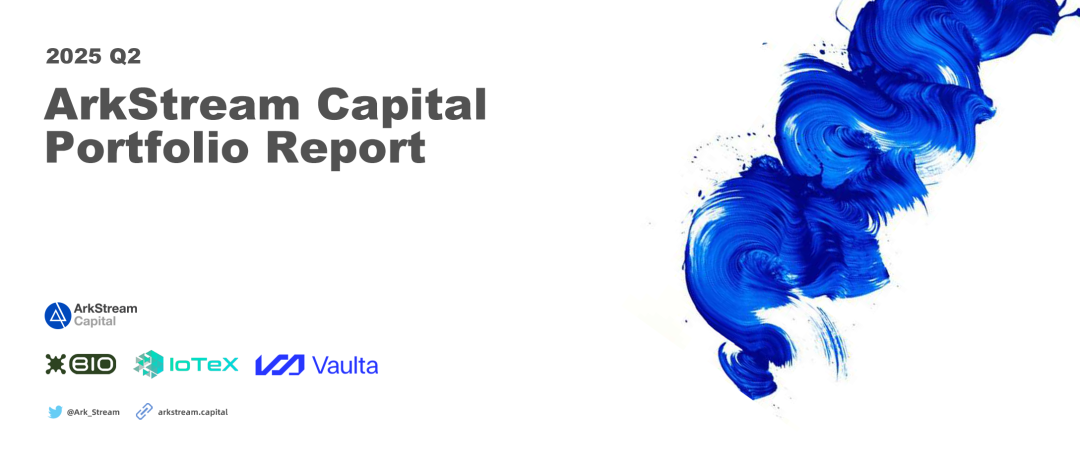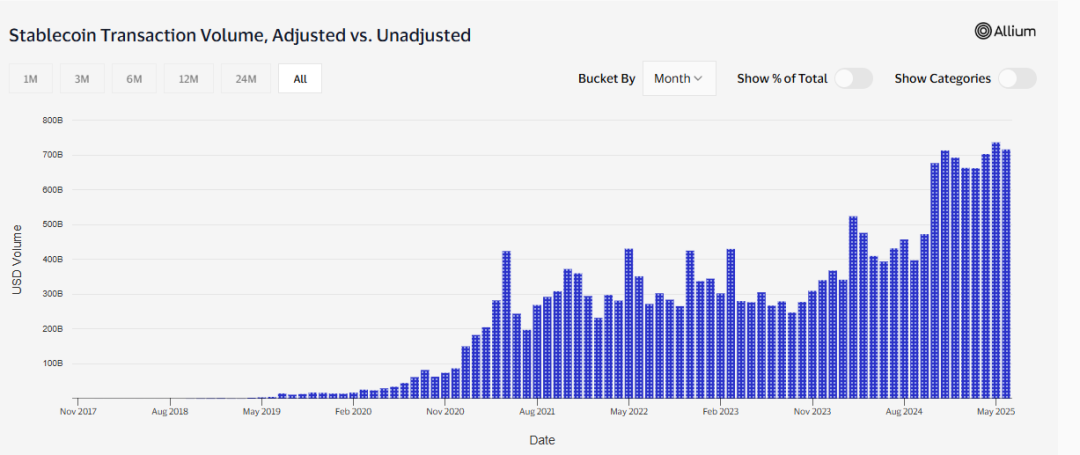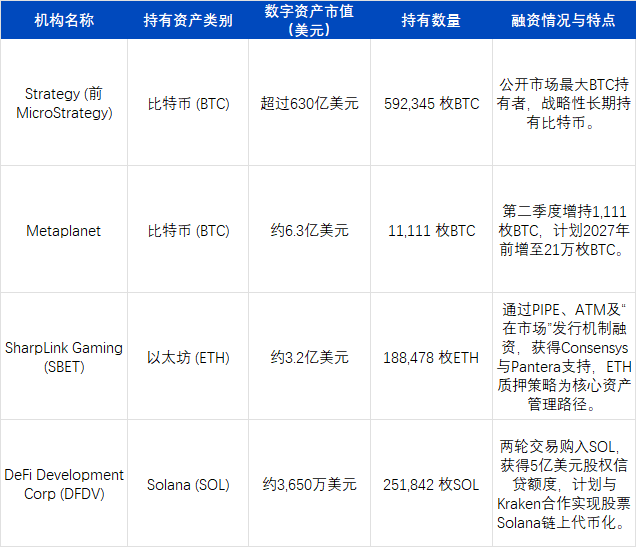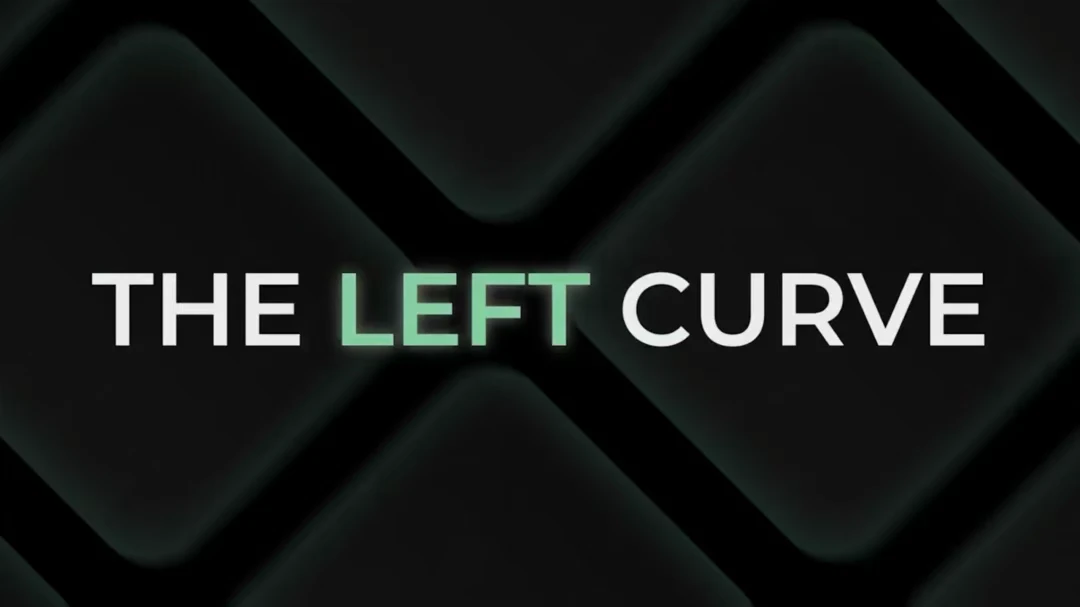 In the second quarter of 2025, the crypto market showed an overall warming trend, with multiple favorable factors working together to accelerate the pace of the industry. On one hand, the global macro environment is stabilizing, and tariff policies are easing, providing a more favorable backdrop for capital flow and asset allocation. On the other hand, many countries and regions around the world have introduced friendly policies for the development of the cryptocurrency industry, and traditional financial markets are beginning to actively embrace cryptocurrencies, linking token structures with traditional financial assets to achieve a "financialization" of capital structures.
In the second quarter of 2025, the crypto market showed an overall warming trend, with multiple favorable factors working together to accelerate the pace of the industry. On one hand, the global macro environment is stabilizing, and tariff policies are easing, providing a more favorable backdrop for capital flow and asset allocation. On the other hand, many countries and regions around the world have introduced friendly policies for the development of the cryptocurrency industry, and traditional financial markets are beginning to actively embrace cryptocurrencies, linking token structures with traditional financial assets to achieve a "financialization" of capital structures.
The stablecoin sector was particularly active this quarter, with the scale expansion of USDT/USDC, the implementation of compliance frameworks in multiple countries, and Circle's IPO all pushing the cryptocurrency narrative closer to mainstream capital markets, releasing strong positive signals. Meanwhile, the on-chain derivatives narrative continued to heat up, with Hyperliquid becoming a phenomenal leader, with daily trading volumes repeatedly approaching or surpassing some centralized exchanges, and native tokens consistently outperforming the market, becoming one of the strongest performing assets. As on-chain matching systems and user experiences continue to improve, the derivatives market is accelerating its structural leap from "off-chain replication" to "on-chain native," further promoting the development of DeFi.
Global Stablecoin Regulation and Potential Opportunities
Genius Act Accelerates Global Stablecoin Regulation
In the second quarter of 2025, the global stablecoin market exhibited sustained growth and the accelerated implementation of regulatory frameworks. As of June 24, the total market capitalization of global stablecoins reached $240 billion, an increase of about 20% since the beginning of the year. Among them, US dollar stablecoins dominate with a market share exceeding 95%. The two leading stablecoins, USDT and USDC, have market capitalizations of $153 billion and $61.5 billion, respectively, together accounting for 89.4% of the market share, further intensifying market concentration. In terms of trading volume, stablecoin on-chain trading volume exceeded $10 trillion in the past three months, with an adjusted effective trading volume of $2.2 trillion and a total of 2.6 billion transactions, adjusted to 519 million transactions. Stablecoins are gradually evolving from crypto trading tools to mainstream payment mediums, and are expected to expand the US dollar stablecoin market size to $2 trillion within the next three years, further strengthening the dollar's dominant position in the global digital economy.
Note: The "adjusted" data in trading volume and transaction counts refers to Visa's filtering of non-organic activities such as programmatic trading and bot behavior, aiming to more accurately reflect the real usage of stablecoins.

Overall Data on Stablecoins

Stablecoin Trading Volume

Stablecoin Transaction Counts
In this environmental context, the regulation of stablecoins is urgent. To this end, the U.S. Congress has taken key actions, with the U.S. Stablecoin Innovation and Regulation Act (GENIUS Act, S.1582) being overwhelmingly passed in the Senate on June 17, 2025, with 68 votes in favor and 30 against. This landmark legislation marks the first time the U.S. has established a comprehensive federal regulatory framework for fiat-backed payment stablecoins. The act complements broader digital asset market structural legislation such as the Digital Asset Market CLARITY Act of 2025, together constructing a new landscape for digital asset regulation in the U.S.
ArkStream interprets the strategic intent and industry impact of the GENIUS Act from two levels. On one hand, the act embodies the U.S. government's grand strategy to modernize the payment and financial system and consolidate the dollar's global dominance; on the other hand, it signifies a critical turning point for the crypto industry towards compliance and institutionalization.
From a strategic perspective, the GENIUS Act is not merely a simple regulation of stablecoin oversight but a systematic financial layout by the U.S. government to maintain the dollar's core position in the global financial system. The act stipulates that all compliant stablecoins must achieve a 1:1 full dollar reserve, which must be strictly held in cash, demand deposits, or short-term U.S. Treasury securities at regulated qualified custodians, and implement high-frequency audits and information disclosure systems to ensure asset transparency and security. This move not only significantly reduces market concerns about the transparency of stablecoin assets and reserve misappropriation but also establishes a "U.S. Treasury absorption pool" deeply linked with on-chain payment systems. Against the backdrop of rapid growth in stablecoin issuance, it is expected to drive tens of trillions of dollars in new U.S. Treasury demand in the coming years, effectively supporting the long-term sustainable development of U.S. finances.
More importantly, the GENIUS Act clearly positions compliant stablecoins as payment tools, excluding them from being classified as securities, fundamentally addressing the long-standing issues of unclear regulatory jurisdiction, regulatory overlap, and legal uncertainty surrounding crypto assets in the U.S. By delineating the boundaries between stablecoins and securities, the act eliminates significant barriers for traditional financial institutions and large enterprises to enter the crypto market, significantly reducing compliance risks and promoting active participation of institutional funds. At the same time, the act adopts a "federal + state" dual-track regulatory authorization model, acknowledging the reality of the existing dual banking system while achieving seamless integration of traditional financial regulation with the emerging stablecoin ecosystem, allowing stablecoin issuers to obtain compliance licenses and enabling financial institutions to legally participate in the issuance and operation of stablecoins.
In the context of intensified global competition in digital currencies, the U.S. is actively constructing a global "token payment network" centered around the dollar by promoting a private sector-led compliant stablecoin system. This open, standardized, and auditable stablecoin framework not only enhances the digital liquidity of dollar assets but also provides efficient and low-cost solutions for cross-border payments and settlements. Especially in emerging markets and the digital economy, stablecoins can break through traditional bank account limitations, achieving peer-to-peer dollar settlements, enhancing transaction convenience and speed, and becoming a new engine for the internationalization of the dollar. This move reflects the U.S.'s pragmatic strategy in digital currency governance, distinguishing it from other countries' centrally banked digital currency (CBDC) closed systems, and placing greater emphasis on market-driven and regulatory synergy to seize the high ground of global digital financial infrastructure.
For the crypto industry, the significance of the GENIUS Act is equally profound. In recent years, stablecoins, as the core infrastructure of on-chain trading and the DeFi ecosystem, have consistently faced dual challenges of insufficient asset transparency and regulatory gray areas, leading to cautious participation from institutional investors in crypto assets. The act's mandated 1:1 full reserve system, combined with strict custody, auditing, and high-frequency information disclosure mechanisms, effectively plugs the risks of "black box operations" and reserve misappropriation from an institutional perspective, greatly enhancing market trust and acceptance of stablecoins. Additionally, the act innovatively constructs a multi-tiered compliance authorization system, providing a clear and actionable legal framework for the issuance and application of stablecoins, significantly lowering the compliance threshold for financial institutions, payment service providers, and cross-border trade platforms to access the stablecoin system.
This means that stablecoins and their derived on-chain financial activities will transition from the previous "regulatory gray area" to the mainstream compliance track, becoming an important component of the digital asset ecosystem. For innovative scenarios such as DeFi, digital asset issuance, and on-chain credit, the compliance assurance of stablecoins can not only reduce systemic risks but also attract more traditional capital and institutional participation, driving the entire industry towards maturity and scaling.
Overall, the GENIUS Act is both a key node in U.S. financial strategy and a significant milestone in the institutional evolution of the crypto industry. Through the dual clarity of law and regulation, stablecoins will become the core driving force for modernizing payments and enhancing the global influence of the dollar, paving a solid compliance path for on-chain financial innovation and the mainstreaming of digital assets. ArkStream will continue to monitor the implementation progress of this act and its far-reaching impact on the global digital financial ecosystem.
In addition to the U.S. GENIUS Act, many countries and regions around the world are also actively promoting compliance frameworks for stablecoins. South Korea is actively constructing a stablecoin regulatory framework. In June 2025, the ruling party proposed the Digital Asset Basic Act, allowing qualified local companies to issue stablecoins and strengthening reserve and capital requirements to promote industry legalization. Regulatory authority is delegated to the Financial Services Commission (FSC), while a Digital Asset Committee is established for unified regulation. The Bank of Korea (BOK) has shifted from initial opposition to support, provided it gains oversight over the Korean won stablecoin. This "central bank co-management" model reflects a pragmatic regulatory evolution in the context of stablecoins impacting traditional banking systems and monetary policy. Meanwhile, South Korea is also advancing broader market liberalization reforms, such as postponing crypto taxes until 2027, opening corporate crypto accounts, and planning spot crypto ETFs, along with cracking down on market manipulation and illegal trading platforms, forming a regulatory combination of "guiding compliance + combating violations," aimed at consolidating its position as a crypto hub in Asia.
Hong Kong will officially implement the "Stablecoin Ordinance" in 2025, becoming one of the first jurisdictions in the world to establish a stablecoin licensing system. The ordinance is expected to take effect in August, requiring stablecoin issuers to register in Hong Kong, hold 1:1 reserve assets, undergo audits, and be included in a regulatory sandbox testing mechanism. Hong Kong's institutional design not only aligns with international standards (such as MiCA) but also provides a compliant pathway for Chinese enterprises to go abroad, reinforcing its position as a "controlled innovation" financial bridgehead.
In this context, Chinese enterprises such as JD.com and Ant Group, along with several Chinese securities firms and financial institutions, are attempting to enter the stablecoin industry. For instance, JD.com is piloting a Hong Kong dollar stablecoin in the Hong Kong regulatory sandbox through its subsidiary JD Coin Chain Technology, emphasizing compliance, transparency, and efficiency, with the goal of reducing cross-border payment costs by 90% and settlement time to 10 seconds. Its strategy adopts a "B2B first, C2C follow" approach, planning to obtain licenses from major countries worldwide to serve global e-commerce and supply chain settlements. This layout complements the domestic positioning of China's digital yuan, together forming a "dual-track system" of national digital currency strategy—controlled by the central bank for internal circulation, while leading enterprises explore external circulation, taking the initiative in the global digital asset landscape.
Huge Opportunities Brought by Stablecoin Compliance to the Crypto Market
For the two leading stablecoins in the current market, USDC (issued by Circle) and USDT (issued by Tether), the passage of the GENIUS Act has far-reaching implications. The act explicitly defines compliant payment stablecoins that meet its stringent standards as non-securities, providing issuers like USDC, which have actively sought compliance, with a clear legal status and regulatory "entry." This means that these stablecoins will no longer be subject to the burdensome regulations of securities law but will instead follow a framework specifically designed for payment tools. The act requires a 1:1 full dollar reserve, independent audits, monthly disclosures, and formal licensing, which will further enhance the legitimacy and market trust of more transparent stablecoins like USDC. For USDT, the act expands the regulatory scope to include foreign stablecoin issuers serving U.S. users, meaning that Tether, regardless of its headquarters location, will be subject to U.S. jurisdiction and must comply with anti-money laundering (AML) requirements. While this may increase its compliance burden, in the long run, this regulatory clarity is also seen as beneficial for Tether, as it helps enhance its legitimacy in the U.S. market. Additionally, the act explicitly prohibits stablecoins that offer yield, which may limit issuers' revenue models but aims to reinforce the nature of stablecoins as payment tools rather than investment products.
Overall, these provisions not only pave a clear compliance path for leading stablecoins but also lay a solid foundation for the healthy development of the entire industry. The passage of the GENIUS Act opens up unprecedented development opportunities for the cryptocurrency industry, primarily reflected in the following three key areas.
First, compliant stablecoins deeply integrate with the DeFi ecosystem, releasing significant funding potential. The act clarifies the legal identity and regulatory framework for stablecoins, opening a green channel for institutional funds to enter the DeFi ecosystem. Taking WLFI and leading DeFi projects as examples, more and more teams are committed to building transparent and secure liquidity pools and credit protocols that comply with regulations. The enhancement of compliance not only lowers investment thresholds but also promotes DeFi from "experimental" to mainstream, releasing hundreds of billions of dollars in potential increments.
Second, stablecoins bring revolutionary opportunities to the payment sector. With the rapid growth of digital payment demand, companies like Stripe are acquiring Bridge, and exchanges like Binance and Coinbase are accelerating their stablecoin payment card business, driving the transformation of payment infrastructure towards stablecoins. The low-cost and high-efficiency settlement advantages of stablecoins are particularly suitable for cross-border payments, instant settlements, and micro-payments in emerging markets, helping them become a key bridge connecting traditional finance and the digital economy.
Third, the combination of RWA anchored by stablecoins and blockchain technology fosters asset digitization and liquidity innovation. By leveraging compliant contracts and on-chain issuance, physical assets such as real estate and bonds can be transformed into tradable digital assets, expanding the liquidity of traditional assets and providing investors with diversified allocation options. The characteristics of blockchain reduce intermediary costs and enhance transparency. As the compliance foundation for stablecoins solidifies, the on-chain issuance and circulation of RWA are expected to develop rapidly, promoting deep integration between the crypto ecosystem and the real economy.
Of course, alongside opportunities, the GENIUS Act also brings challenges. It expands the definition of digital asset service providers, requiring developers, validators, and others to comply with anti-money laundering regulations. Although it does not regulate the blockchain protocols themselves, decentralized projects face greater compliance pressure. The act is more suited for centralized institutions, and decentralized projects may be forced to move out of U.S. regulation, leading to market fragmentation.
Circle's IPO Leads a New Paradigm: Corporate Balance Sheets Moving On-Chain
At the beginning of the second quarter of 2025, the crypto market entered a phase of consolidation under the uncertainty of the global macro environment brought about by tariff disputes and high interest rates, with investors' risk appetite declining and internal industry divergences becoming more pronounced. Funds have clearly concentrated on Bitcoin, with Bitcoin Dominance continuously rising to its highest level in four years, while altcoin markets generally faced pressure. Nevertheless, institutional participation remains strong, especially through compliant channels such as spot ETFs and stablecoins, further enhancing the position of crypto assets in the global asset allocation system.

Bitcoin Dominance
Circle is the biggest beneficiary of this institutional influx, with its IPO undoubtedly being the highlight of the quarter. As the issuer of USDC, Circle successfully listed on the NYSE, with an issuance price of $31 per share, higher than the expected range, raising a total of $1.1 billion, and achieving a market capitalization of $6.9 billion at IPO pricing. Within less than a month, its market capitalization surged to $68 billion. Circle's strong performance represents the formal entry of regulatory-compliant crypto enterprises into mainstream capital markets, and its path of compliance with MiCA and long-term SEC registration has become an important model for the stablecoin industry, also opening a listing window for other crypto companies.
In addition to Circle, several publicly listed companies have taken substantial steps in their digital asset allocation strategies. The most representative is SharpLink Gaming (SBET), which, as of June 20, 2025, had accumulated 188,478 ETH and deployed all of its holdings into staking protocols, generating staking rewards of 120 ETH annually. The company raised funds through PIPE financing and an "at-market" issuance mechanism, receiving support from institutions such as Consensys and Pantera. Additionally, SharpLink actively utilizes the ATM (At-The-Market) financing mechanism to flexibly issue shares based on market conditions, quickly raising operational funds and further strengthening its asset allocation and business expansion capabilities. With diversified financing channels, the ETH strategy has become SharpLink's core asset management path.
DeFi Development Corp (formerly Janover Inc.) is restructuring its business model with Solana as its core asset. In April 2025, it acquired a total of 251,842 SOL through two rounds of transactions, amounting to approximately $36.5 million, and announced on June 12 that it had obtained a $500 million equity credit line for further accumulation. DFDV plans to collaborate with Kraken to tokenize the company's stock on the Solana blockchain, creating an "on-chain native public company." This represents not only a shift in asset allocation models but also an innovation in financing and liquidity mechanisms.
Besides Ethereum and Solana, Bitcoin remains the preferred reserve asset for institutions. Strategy (formerly MicroStrategy) held 592,345 BTC as of June 2025, with a market value exceeding $63 billion, maintaining its position as the largest public BTC holder globally. Metaplanet is rapidly advancing its Bitcoin reserve strategy in the Japanese market, increasing its holdings by 1,111 BTC in the second quarter of 2025, bringing its total holdings to 11,111 BTC, with plans to achieve a target of 210,000 BTC by 2027.

From a geographical distribution perspective, corporate crypto asset strategies are no longer limited to the U.S. market, with active explorations in Asia, Canada, and the Middle East, reflecting globalization and multi-chain characteristics. Correspondingly, there are attempts to utilize more complex forms of asset applications, such as staking, DeFi protocol integration, and on-chain governance participation. Companies are no longer merely passively holding coins but are building asset-liability structures and revenue models centered around crypto assets, shifting their financial models from "reserves" to "yield generation," and from "hedging" to "production."
On the regulatory front, the regulatory compliance represented by Circle's IPO, along with the SEC's repeal of SAB 121 and the establishment of the "Crypto Task Force," indicates that U.S. policy positions are evolving towards greater clarity. Meanwhile, although Kraken still faces an SEC lawsuit, its proactive advancement of early IPO financing also shows that leading platforms still have expectations for the capital market. Animoca Brands plans to list in Hong Kong or the Middle East, and Telegram is exploring a revenue-sharing mechanism driven by TON, reflecting that regulatory choices are becoming an important component of crypto companies' strategies.
The market trends and corporate behaviors of this quarter indicate that the crypto industry is entering a new phase of "institutional structural reallocation" and "corporate balance sheets moving on-chain." The "MicroStrategy-like" strategy provides new funding increments for several high-market-cap altcoins. ArkStream believes that native crypto VCs should seize this opportunity, focusing on the following directions in the future: first, projects with stablecoin, staking, and DeFi yield capabilities; second, service providers that can assist companies in executing complex asset allocations (such as institutional-grade staking platforms and crypto financial accounting systems); and third, leading companies that embrace compliance and are willing to enter the public capital market. In the future, the depth of corporate allocations in specific altcoin ecosystems and innovative models will become core variables in the new round of industry valuation reconstruction.
The Rise of Hyperliquid, On-Chain Derivatives, and Real Returns DeFi
In the second quarter of 2025, the decentralized derivatives protocol Hyperliquid achieved a key breakthrough, further solidifying its dominant position in the on-chain derivatives market. As the current on-chain trading experience is the smoothest and product design most closely aligned with centralized exchange standards, Hyperliquid not only continues to attract top traders and liquidity but also effectively drives growth and user migration trends across the entire derivatives sector. Meanwhile, its native token HYPE also performed remarkably during the quarter, rising over 400% since its low in April and reaching an all-time high of approximately $45 in mid-June, further validating the market's consensus on its long-term potential.
The rise of the HYPE token is primarily driven by explosive growth in platform trading volume. In April 2025, Hyperliquid's monthly trading volume was approximately $187.5 billion. In May, this figure surged by 51.5% to a record $248 billion. During this period, the trading frenzy initiated by renowned trader James Wynn significantly increased the platform's visibility, becoming an important catalyst for this growth. As of June 25, Hyperliquid's monthly trading volume still reached $186 billion, with a cumulative trading volume of $621.5 billion for the second quarter. Meanwhile, Hyperliquid's market share in the decentralized perpetual contract market reached 80%, far exceeding the 30% in November 2024; its monthly perpetual contract trading volume in May accounted for 10.54% of the total derivatives volume of $2.3 trillion on centralized exchange Binance during the same period, setting a new record. These data fully demonstrate Hyperliquid's trading attractiveness and user stickiness as the leader in the on-chain derivatives market, as well as its rapid rise and leading position in the industry.

Hyperliquid Trading Volume
Hyperliquid's core profit source relies entirely on the trading volume generated by its platform. The protocol accumulates revenue by charging fees on each transaction, building a highly sustainable profit model. As user activity and trading depth increase, the platform's fee income continues to grow, becoming the fundamental driving force behind the token's value and ecosystem expansion. Of this revenue, 97% is directed towards repurchasing HYPE tokens through an assistance fund, creating a strong value return mechanism. Over the past seven months, Hyperliquid's total fees have reached $450 million, with the assistance fund holding over 25.5 million HYPE tokens, which, at the current market price of approximately $39.5, has a holding value exceeding $1 billion. This repurchase not only continuously reduces the circulating supply in the market but also directly ties platform growth to token performance, significantly enhancing HYPE's price elasticity and long-term growth potential.

Hyperliquid Assistance Fund Address
To strengthen this economic model, Hyperliquid has designed a fee structure centered on user incentives and community orientation. The platform sets tiered fee rates based on users' weighted trading volume over the past 14 days, with spot trading volume counted double. High-frequency users can enjoy lower fees, and market makers at higher tiers even benefit from negative fee rebates, encouraging them to continuously provide liquidity to the order book. By staking HYPE, users can also receive up to a 40% additional fee discount and referral rewards, further enhancing the token's utility and holding willingness. Notably, all protocol revenue belongs to the community, with no allocation to teams or privileged accounts, and the assistance fund is fully on-chain managed, requiring authorization from a statutory number of validators for all operations, ensuring governance transparency. In terms of the liquidation mechanism, the platform does not charge direct fees, and the profits and losses from retrospective liquidations also belong to the community, further avoiding the common "profit from user losses" model seen in centralized exchanges, enhancing user trust and platform credibility.
Hyperliquid's ability to repeatedly set new highs and achieve such a significant market position can be attributed not only to its innovative token economic model but also to its unique technical architecture. Hyperliquid operates on a proprietary Layer-1 chain driven by the HyperBFT consensus mechanism. This infrastructure enables ultra-fast transaction finality and can process up to 100,000 orders per second. This architecture provides performance similar to centralized exchanges while maintaining non-custodial and crypto-native characteristics, greatly enhancing the user experience. This indicates that continuous innovation in underlying blockchain technology is not a mere fantasy but a tangible improvement in productivity and user experience, providing technical assurance for the future exponential growth of on-chain users.
The success of Hyperliquid is not just about the growth of trading data; it has also reignited the industry's focus on the concept of Real Yield. In the DeFi space, "Real Yield" refers to income generated from actual economic activities, such as trading fees, lending interest, or protocol revenue, rather than through inflationary issuance of more tokens. This stands in stark contrast to the early models of DeFi from 2020 to 2022, when protocols rapidly grew by distributing native tokens as rewards, often exceeding the platform's actual revenue, leading to long-term dilution and capital flight after short-term booms. The shift towards Real Yield is crucial for the long-term viability and survival of DeFi protocols, as any yield model needs a revenue-supported foundation to endure. Key characteristics include that revenue comes from actual protocol activities rather than promises, a focus on long-term capital efficiency and user trust, providing genuine financial utility that users are willing to use even without incentives, and emphasizing reliability, usability, and real value rather than mere speculation.
Therefore, as an investment institution, priority should be given to protocols with actual economic activities and defensible business models, strong token economics, and revenue-sharing models, such as Hyperliquid and AAVE, with a focus on their long-term sustainability rather than just TVL or speculative price trends.
Project Investments

Bio Protocol
Bio Protocol is a decentralized protocol designed specifically for scientific research, aiming to reconstruct the underlying mechanisms of funding flow, achievement incentives, liquidity management, and research automation in traditional research systems through blockchain technology, creating an open, transparent, and market-oriented research financial infrastructure. Its core goal is to support the creation and accelerated development of a new generation of BioDAOs, achieving a full-chain closed loop for research projects from selection, financing, governance to achievement transformation. The protocol is built around five core research operational modules: decentralized research curation, research startup financing, automated liquidity management, milestone incentives, and AI-driven research automation assistants (BioAgents). Bio Protocol ensures project quality and interest alignment through on-chain governance and staking mechanisms, utilizes the Treasury to provide diversified liquidity support, and enhances research efficiency with AI agents, creating an integrated and sustainable research ecosystem. Additionally, Bio Protocol introduces IP-Tokens (Intellectual Property Tokens) to express on-chain governance rights and participation rights for research achievements, promoting an open and co-governed research process within the community, and creating a transparent and efficient research asset pool.

IoTeX
IoTeX is a decentralized, modular Web3 infrastructure platform designed to connect smart devices and real-world data with blockchain, building a decentralized open ecosystem for the real world. Its core goal is to bridge the connection between Web2 and Web3, allowing smart devices, real-world data, and various decentralized applications (DApps) to interact securely, reliably, and efficiently, enabling value exchange.

Vaulta
Vaulta is a high-performance Web3 banking operating system built for the next generation of digital finance, positioned as the core infrastructure for RWA and compliant financial markets. Its underlying technology employs a self-developed Savanna consensus mechanism and Vaulta EVM, supporting second-level transaction finality and concurrent processing capabilities, ensuring stable low-fee trading performance even under high-load conditions, meeting the throughput and reliability needs of institutional-level applications. Unlike typical public chains, Vaulta's design natively supports programmable finance and modular banking architecture, allowing developers to build composable account systems, controllable asset management logic, and nested governance structures.
In the RWA space, Vaulta provides a complete end-to-end asset tokenization infrastructure, including natively supported asset custody, compliance whitelists, tiered account permissions, and on-chain auditable revenue distribution mechanisms. In terms of compliance, Vaulta does not circumvent regulations but deeply integrates with existing regulatory logic. Its built-in permissioned operating environment supports account audits and fund path monitoring under various regulatory jurisdictions. At the same time, Vaulta has constructed an audit-friendly ledger structure and a programmable compliance rule set, enabling financial institutions to meet the financial regulatory requirements of different regions without sacrificing control.
Events Attended
Participated as a guest in the BlockBeats event "What is the Real Impact of the Singapore DTSP Act?"
https://x.com/BlockBeatsAsia/status/1933004478674059458

Attended the Cryptic-hosted Space "Can True Decentralization Coexist with VC Ownership and Governance Influence?"
https://x.com/cryptic_web3/status/1937752659110613228?s=46

Participated as a mentor in the TDefi-hosted Web3 Accelerator Program Phase IV
https://x.com/tde_fi/status/1933868272925151536?s=46

Participated as a judge in the KeyMapDAO event "ETH Huangshan"
https://x.chttps://x.com/keymapdao/status/1931323849347621021?s=46

Participated as a guest in the Radarblock interview program "The Left Curve"
https://x.com/radarblock/status/1888899390523445605?s=46

Reference Links
Visa Stablecoin On-Chain Data:
https://visaonchainanalytics.com/transactions
Bitcoin Dominance:
https://coinmarketcap.com/charts/bitcoin-dominance/
Sharplink:
https://investors.sharplink.com/sharplink-gaming-expands-eth-treasury-holdings-to-188478
Strategy's BTC Purchase Data:
https://www.strategy.com/purchases
Animoca's IPO News:
Hyperliquid's Trading Volume:
https://defillama.com/perps/hyperliquid
Hyperliquid's Assistance Fund Address:
https://hypurrscan.io/address/0xfefefefefefefefefefefefefefefefefefefefe
Hyperliquid Trading Fee Structure:
https://hyperliquid.gitbook.io/hyperliquid-docs/trading/fees
免责声明:本文章仅代表作者个人观点,不代表本平台的立场和观点。本文章仅供信息分享,不构成对任何人的任何投资建议。用户与作者之间的任何争议,与本平台无关。如网页中刊载的文章或图片涉及侵权,请提供相关的权利证明和身份证明发送邮件到support@aicoin.com,本平台相关工作人员将会进行核查。




